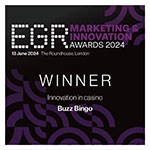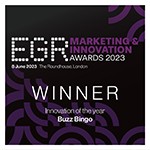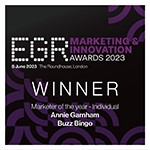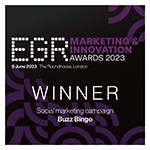Bingo Pop Culture: How the Classic Game is Evolving in the Modern Age
07/05/2023

Bingo Pop Culture: How the Classic Game is
Bingo is one of the longest-living games that we enjoy today, with roots dating back hundreds of years. The original version of bingo comes from the Italian lottery, with the decidedly less-catchy name of Il Gioco del Lotto d'Italia.
Dated to around 1503, this game of chance was popular with people from all walks of life, creating the first forms of bingo culture. Quickly catching on, this prototype of bingo couldn't be contained within Italian borders, as it eventually spread its wings and headed out into the wider world.
Evolution of Bingo
Outside of Italy, the first stop made by bingo was in France sometime in the late 1770s. Here the game was named Le Loto, which is fun to say but still far from the fun title we have today. Le Loto was enjoyed mostly by the wealthy, likely accompanied by food and drink that the commoners could only dream of. Of course, with greater spread, came success.
Next up was Germany in the 1800s, which was all too eager to get on what would eventually become the bingo train. Curiously, the Germans didn't use their form of bingo as much for gambling as they did as a tool for teaching history, mathematics, and spelling to children. We know which version we’d prefer.
Following success in Germany, the game also moved into the rest of Europe, and beyond. The final big leap in changing the form of the bingo game appeared in the 1920s, when bingo became famous in carnivals, especially in the United States. Here it had claimed the name “beano”, thanks to players marking their cards with beans. Win or lose, you’d end up with a healthy treat, though there are no confirmed records of players consuming their play pieces.
When, where, and why the name of Beano was changed to Bingo isn't exactly known, but there are rumours of its origins. The most popular is that an excited player accidentally mispronounced Beano when calling out a win. This little gaff was recorded in bingo culture, becoming the name we all love to sing.
Today, modern bingo plays much the same as it did in carnivals, only with the support of better technology. With tablets, we no longer have to rely on physical cards, though some of us still prefer this route for the tactile feel and the presence of bingo art on the cards.
The internet also plays a huge role today, mirroring greater cultural trends moving towards online entertainment. Being online with websites like Buzz Bingo allows us to play both with friends and others from all over the world, so it’s only natural that it’s a hit.
Pop Culture and Bingo
Bingo is a game that doesn't just transcend borders, it also has a profound effect on popular culture. The fundamental basis of this success stems from the evergreen components the game holds at its core. Bingo is great with friends, it's easy to understand, and it can be modified to appeal to players of different ages. It’s not just a game anymore, as bingo culture has been a part of many societies that adopted the game.
In popular culture, the game’s fame has led it to an enormous variety of themes and forms of implementation. Bingo film and television-inspired games are now common, borrowing from hits like Deal or No Deal to combine popularities and visibility. Although TV bingo shows entirely focussed on the game are rare, actually seeing bingo in a movie or series is common, as a form of entertainment that needs no introduction.
Breaking Bad is a show that features bingo prominently in the seventh episode, named after the game. Here, the character Jimmy was shown calling a game, though bingo was also used as a reference to characters finding a hidden money stash. Shows like Curb Your Enthusiasm and Family Reunion also find themselves among the mainstream hits that included the game as a narrative backdrop.
Bingo art has also become a staple in pop culture thanks to how well the theme can be expanded and adapted. Bingo cards can always do with a little extra flair and style and custom bingo art can be a great way to express a mood or theme. Artistic approaches don't stop there either, as bingo venues also found their way into the pop phenomena with the arrival of bingo raves, or special events that involve a range of bizarre, non-traditional prizes or callouts.
Technology and Bingo
For hundreds of years, the technology behind bingo remained relatively unchanged. The digital age threw off these early patterns, adding real benefits to the game. Going paperless with tablets in physical parlours is a big advantage for some, but the world wide web can be just as helpful to players of all preferences.
Some players like to go it alone and online versions of the game cater well to this type of player. Players who focus on the social aspect of the game are also now well-served thanks to mobile versions on tablets and smartphones, where they can play with strangers around the world.
It is easy to connect to local Wi-Fi or 4G/5G signals, so users can play from practically anywhere they want. Whether hanging out in their homes with a big group of friends or relaxing in the park with a buddy, new bingo technology lets players adapt their social experience like never before.
Thanks to online systems, the communities we play with don't need to be physical now either. New offerings like Buzz Bingo's Community features provide players with a new way to find online friends to compete and talk with. These communities have often evolved into real friend groups away from the game too.
The benefits of technology extend to special bingo promotions not possible in the physical space. Online, guaranteed jackpots and welcome offers present even more ways to win. These are made possible thanks to the lower operating costs of the online world, and they’re only growing more popular.
Even the most central tenants of bingo can be aided and appealed to with newer digital offerings like Buzz Bingo live games. These games include real dealers, which help combine the feel of physical play with the convenience of digital systems.
Online platforms can also benefit from random number generation, or RNG, which eliminates the risk of faulty machines causing a bias towards certain numbers. The benefits of software add up on many levels, creating a new big picture that few of even the most diehard players saw coming.
The Cultural Significance of Bingo
Bingo isn't the only game to stay in the mainstream cultural consciousness for hundreds of years, but it is arguably one of the most popular thanks to its social aspect. We're social animals, we enjoy gentle competition, and bingo allows us to explore these parts of ourselves.
It’s also a great excuse for people with free time like older adults to hang out with friends, which is why bingo culture is so often embraced by retirees. It’s fun without being exhausting, and as history shows, we’ll never grow tired of that.
In practice, bingo is so well-understood and easy to play that it's also been used as a major platform for special charity events. Just like charity raffles, everyone knows what they're in for with bingo, so players can jump in right away with the knowledge that, win or lose, they'll be helping someone out.
Bingo relying on player input gives this form of competition a more personal edge, where a win feels less like it was entirely luck, though it still was.
Conclusion
From some forward-thinking Italians 500 years ago, bingo has stood the test of time like few other games. As it spread and evolved over countries and centuries, the core of the experience has remained the same, and we've never let that go.
Whether looking at mainstream pop culture references or the relaxed play groups of our grandparents, bingo doesn't just persist, it excels. Combined with greater accessibility and customisability from technological progress, the cultural significance of this game has no end in sight.
From casual fans to dedicated enthusiasts, it’s difficult not to appreciate how far we’ve come, and the effect that bingo will continue to have on our future.










